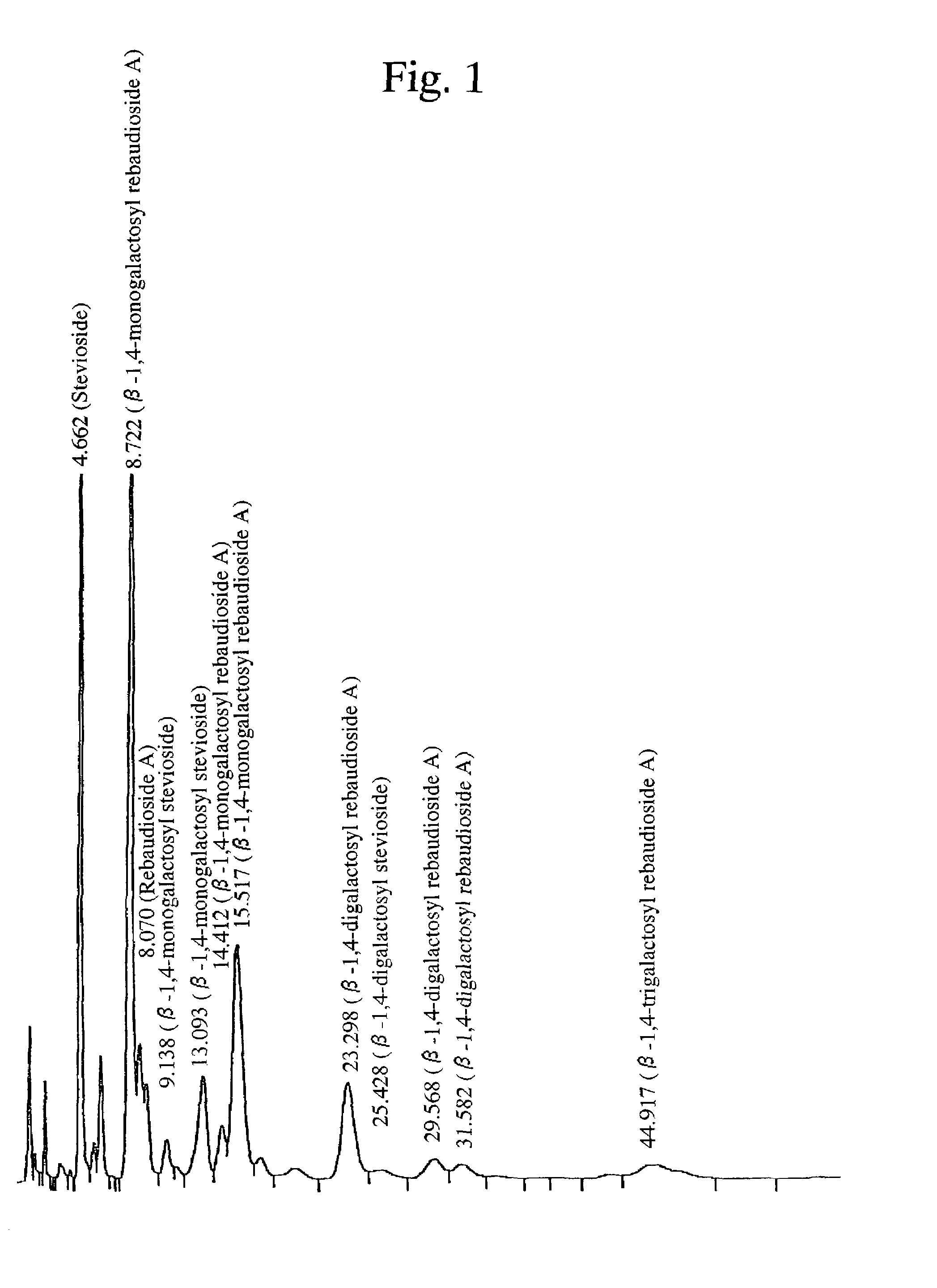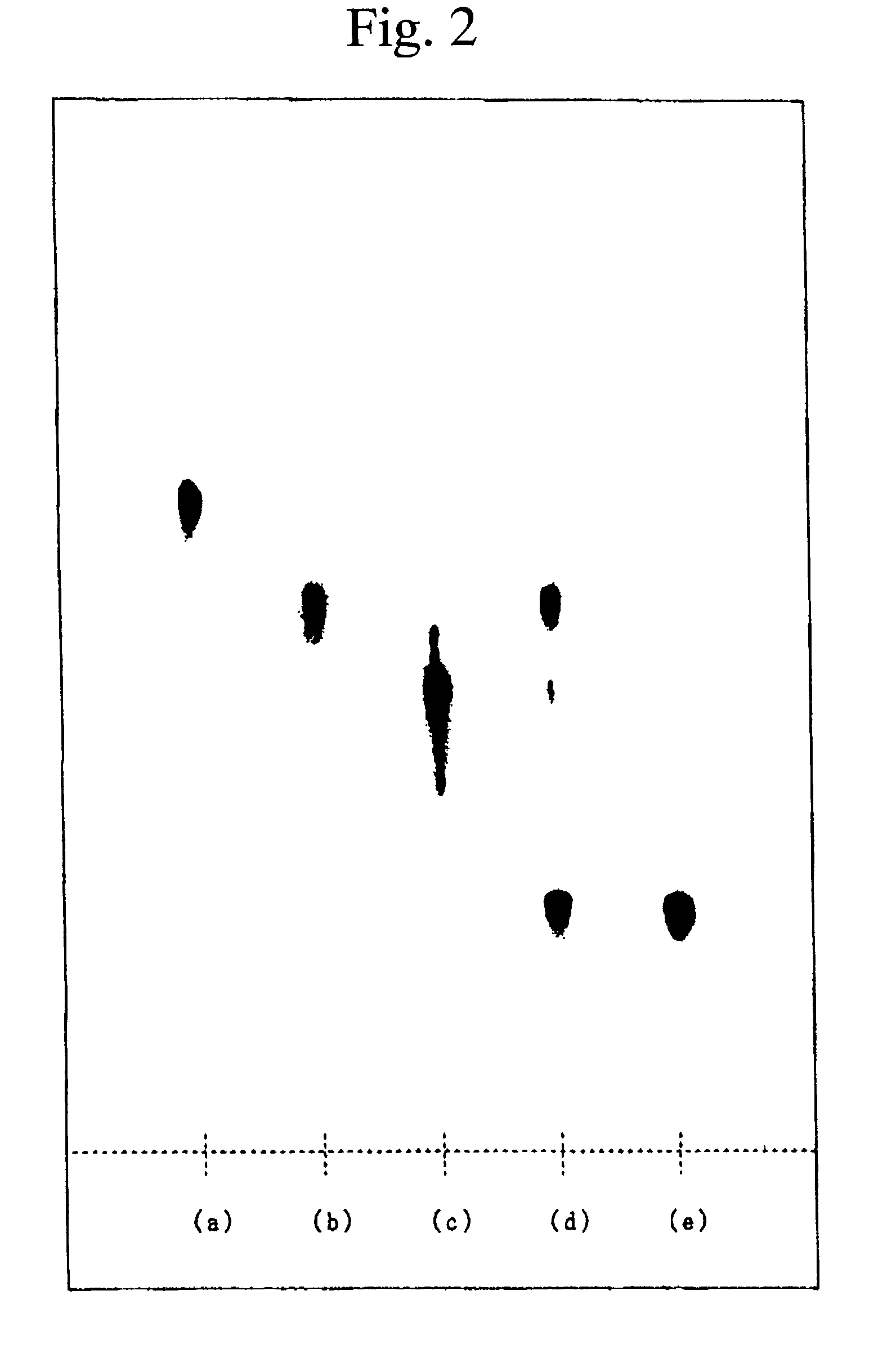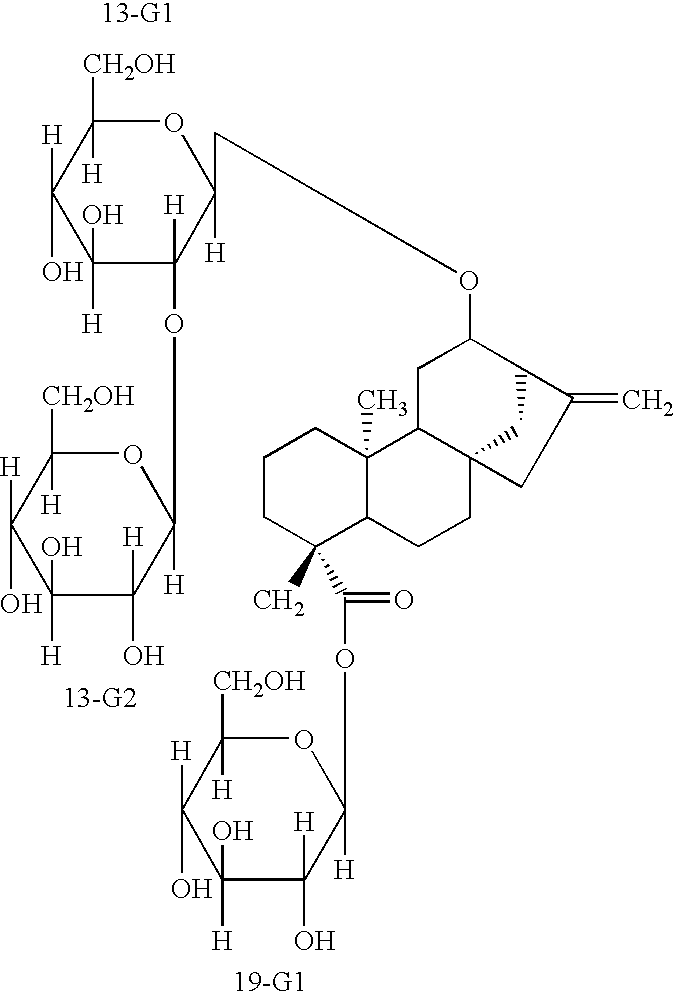Sweetener and process for producing the same
- Summary
- Abstract
- Description
- Claims
- Application Information
AI Technical Summary
Benefits of technology
Problems solved by technology
Method used
Image
Examples
reference example 1
Preparation of Strain Suspension for Culturing Microorganisms Capable of Producing β-1,4-galactosyl Transferase
[0105]A culture medium (pH 5.2, 3 liters) composed of 0.4% of dipotassium hydrogenphosphate, 0.5% of ammonium sulfate, 0.06% of magnesium sulfate, 0.001% of zinc sulfate, 0.005% of ferrous sulfate, 0.1% of yeast extract, 1.0% of glucose and 0.5% of lactose was charged in a jar fermentor having a volume of 10 liters and then sterilized by autoclaving. After air-cooling, a strain of Rhodotorula minuta was inoculated on the culture medium and cultured at 30° C. with aeration and stirring for 24 hours to produce cells. The resulting culture broth was centrifuged and the cells were collected. The cells were washed twice with a phosphate buffer having a concentration of 0.05 mol / l and then suspended in 600 ml of the same buffer to prepare a suspension of cells. The total activity of β-1,4-galactosyl transferase in the resting cells was 3420 U.
reference example 2
Preparation of Crude Enzyme Solution of β-1,4-galactosyl Transferase
[0106]The same culture medium (3 liters) as in Reference Example 1 was charged in a jar fermentor having a volume of 10 liters and then sterilized by autoclaving. After air-cooling, a strain of Bacillus circulans was inoculated on the culture medium and cultured at 30° C. with aeration and stirring for 24 hours to produce cells. The resulting culture broth was centrifuged and the cells were collected. The cells were washed twice with a 0.05 mol / l phosphate buffer and then suspended in 100 ml of the same buffer to prepare a suspension of cells. After crushing the cells by ultrasonic crushing, the suspension was centrifuged to remove the crushed cells, and a precipitate was salted out from the supernatant by adding 70% saturation ammonium sulfate. The precipitate was collected by centrifugation. The recovered precipitate was suspended in 100 ml of a phosphate buffer having a concentration of 0.05 mol / l to prepare a cr...
example 1
[0107]10.0 g of a Stevia extract Al (the weight percentage of stevioside: 26.8%, the weight percentage of rebaudioside A: 58.5%) and 100 g of lactose as a galactosyl sugar compound were dissolved in 500 ml of water with heating and the solution was air-cooled to room temperature, and then the pH was adjusted to 6.0 using an aqueous sodium hydroxide solution having a concentration of 1 mol / l. To the solution, 100 ml of a suspension of cells having a β-1,4-galactosyl transferase activity obtained in Reference Example 1 was added, followed by the reaction at 50° C. for 24 hours. After the completion of the reaction, this reaction solution was maintained at 95° C. for 30 minutes to inactivate the enzyme.
[0108]After this solution was filtered to remove a suspended solid, the filtrate was passed through a column packed with 500 ml of styrenedivinylbenzene synthetic adsorbent resin (Diaion HP-21) to cause adsorption of a sweetness component. After the stationary phase was sufficiently wash...
PUM
 Login to View More
Login to View More Abstract
Description
Claims
Application Information
 Login to View More
Login to View More - R&D
- Intellectual Property
- Life Sciences
- Materials
- Tech Scout
- Unparalleled Data Quality
- Higher Quality Content
- 60% Fewer Hallucinations
Browse by: Latest US Patents, China's latest patents, Technical Efficacy Thesaurus, Application Domain, Technology Topic, Popular Technical Reports.
© 2025 PatSnap. All rights reserved.Legal|Privacy policy|Modern Slavery Act Transparency Statement|Sitemap|About US| Contact US: help@patsnap.com



